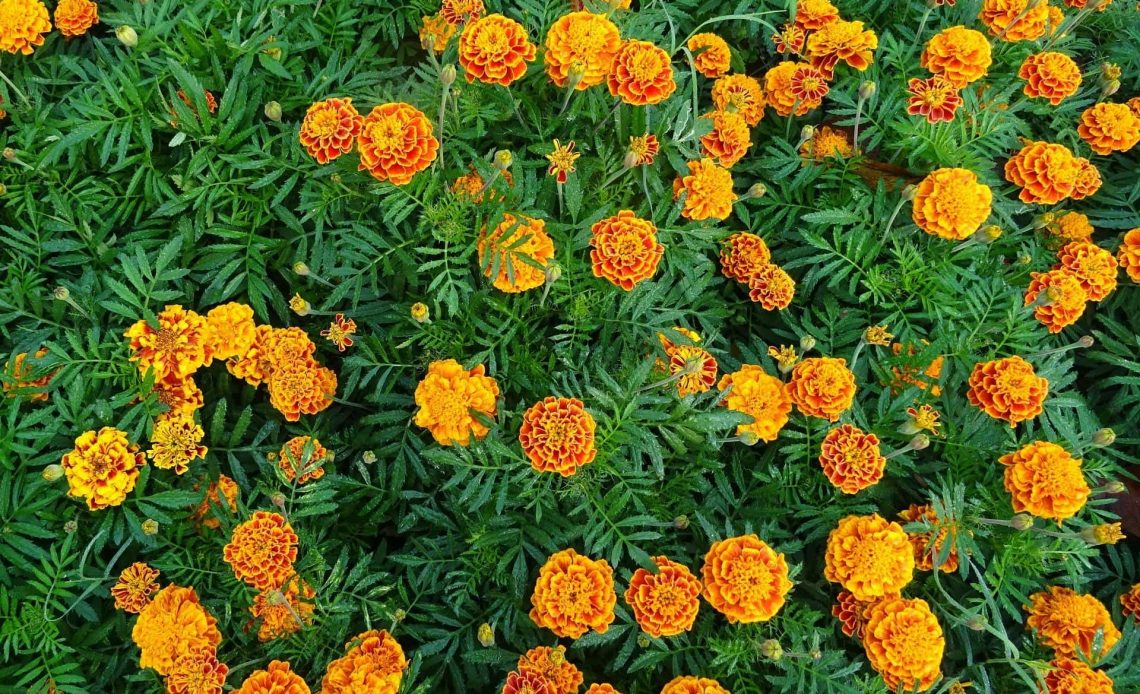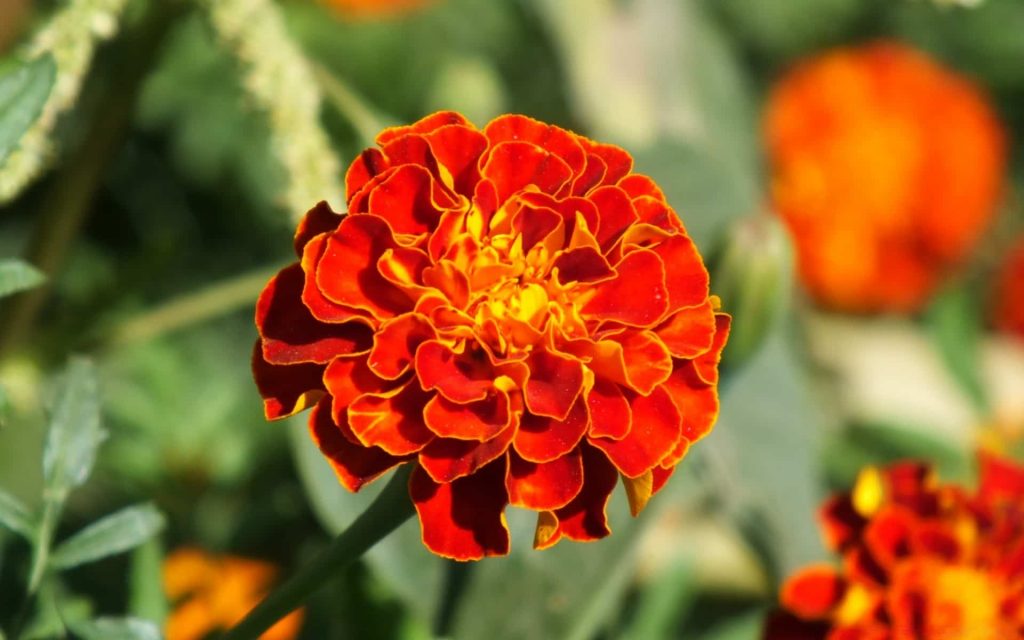
Marigolds, with their cheerful blooms in vibrant shades of orange, yellow, and red, are a popular addition to gardens. But do these sunny flowers grace your presence year after year? The answer might surprise you! Marigolds come back each year, though with a bit of an asterisk. Let’s delve into the fascinating life cycle of marigolds and how you can enjoy their beauty season after season.
What are Marigolds?

Marigolds (Tagetes spp.) are a diverse group of flowering plants native to Central and South America. They come in a variety of sizes, shapes, and colors, ranging from sunny yellows and oranges to fiery reds and even bi-colored blooms. Marigolds are not only beautiful additions to gardens but also well-known for attracting pollinators like butterflies and bees.
Marigolds, bursting with sunshine in colors of orange, yellow, and red, are more than just cheerful additions to your garden. These vibrant blooms hold a surprising amount of symbolism. Flowers that symbolize wisdom, marigolds have long been associated with knowledge and enlightenment. Their sturdy nature and long blooming season have also earned them a place in cultures around the world, representing passion, creativity, and even protection. So next time you see a marigold, appreciate not only its beauty but also the rich stories it tells.
Popular Types of Marigolds

With so many marigold varieties available, you’re sure to find the perfect fit for your garden:
African Marigolds: These tall beauties boast large, single or double blooms and excellent heat tolerance.
French Marigolds: Known for their bushy form and smaller, double flowers, French marigolds are a great choice for borders and containers.
Triploid Marigolds: These sterile marigolds produce no seeds, resulting in a longer flowering period with minimal deadheading required.
Signet Marigolds: Compact and low-growing, signet marigolds are perfect for edging or adding pops of color to walkways.
Mexican Marigolds: Also known as “cempasúchil,” these marigolds hold cultural significance in Mexico and are often used in Dia de Muertos celebrations.
Planting and Care
Marigolds are known for their ease of care. They thrive in full sun, well-drained soil, and with regular watering during hot, dry periods. Deadheading spent flowers encourages continuous blooming throughout the season.
Common Questions About Marigolds Coming Back
Do marigolds come back in winter?
Most marigolds are annuals, meaning they complete their lifecycle (germination, growth, flowering, seed production, death) within one season. They won’t survive freezing temperatures.
What to do with marigolds at the end of the season?
You can remove the plants once frost arrives. Alternatively, if you’d like marigolds to potentially return next year, let some flowers develop seed heads.
Do marigolds spread?
Marigolds can self-seed, meaning dropped seeds germinate in the spring, potentially giving you a new crop of marigolds the following year.
Do French marigolds come back every year?
Like most marigolds, French marigolds are annuals. However, they can self-seed and surprise you with new blooms in the following season.
Do African marigolds come back?
African marigolds also behave as annuals, but self-seeding is a possibility.
By understanding marigolds’ life cycle and self-seeding potential, you can enjoy these vibrant flowers year after year in your garden!
